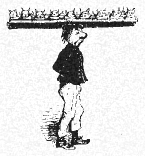
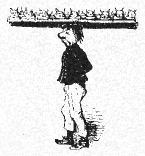 Figuristi di Gesso
Figuristi di Gesso 
 Figuristi di Gesso
Figuristi di Gesso
![]()
In these
mountains, 30 km. north of the beautiful city of Lucca, you'll find a collection
of small towns and villages close to a town called Bagni di Lucca. The making
of plaster figurines started in Bagni di Lucca as early as the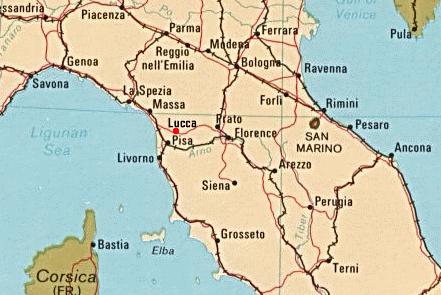 14th
century. As a matter of fact, a document from 1373 in the archives of Lucca
mentions a figuris gesso, a figure of plaster. Nevertheless, emigration
of the figuristi did not begin until the 18th century, when (according to Cherubini)
a certain Salsini emigrated in 1712 with his son to Germany.
14th
century. As a matter of fact, a document from 1373 in the archives of Lucca
mentions a figuris gesso, a figure of plaster. Nevertheless, emigration
of the figuristi did not begin until the 18th century, when (according to Cherubini)
a certain Salsini emigrated in 1712 with his son to Germany.
It took another century before the emigration from Lucca expanded
Some figures:
In the period 1866 - 1873
592 figuristi emigrated from Bagni di Lucca,
557 from Barga and
484 from Coreglia
These figuristi
emigrated primarily to France and the Americas and to a lesser extent to England,
Germany and Brazil. Some went to Austria, Spain, Turkey, Belgium, Argentina
and Switzerland. According to passport requests, entire families sometimes left
their villages. The age of the figuristi generally ranged from 20 to
40 years.
In the beginning of
this century (before the first world war), the number of emigrants from the
valley of the Lima and Serchio, around Bagni di Lucca, was still increasing.
In this period of time, 268 figuristi left their homes each year travelling
to North and South America and later to Australia. Between 1850 and 1930, emigration
caused a massive depopulation of the smaller villages, which then resulted in
much fallow land.
What now was the cause
of this mass migration from Lucca?
It certainly was not an easy step to emigrate in these times. The small villages
were very isolated from the bigger cities, most of the time being only accessible
by small paths through the mountains. As new inhabitants of a foreign country,
these emigrants had to adapt to the yet unknown culture and language. Usually
no help was expected. The area close to Bagni di Lucca was certainly not one
of the poorest in Italy, and there was a relatively high degree of culture and
education. Thus, poverty can not be considered the main reason for leaving.
People had a great variety of incomes and were relatively wealthy.
The massive emigration
probably arises from the tradition of seasonal migration. In winter, products
were made to be sold elsewhere. As transportation improved, people moved farther
in summer. At a certain point in time, a so-called chain migration took place.
One individual (the chain pioneer) emigrated to another country and later returned
to his family and friends as a wealthy man. Others dared to follow his example
when they also came back wealthy, others, were stimulated to do the same. A
chain migration was born. This chain might have been broken if the migration
had not been successful. Obviously this was not the case since a mass migration
took place. The first figuristi became almost mythical figures, and,
alot of heroic stories are still being told about them. In fact, legend has
that, in the discovery of America, Columbus arrives in the New World only to
discover the figuristi already there and ready to welcome him with a plaster
figurine.
In the initial years
of the migration period, the figuristi left their homes for only short
periods of time, one to three years, depending on the distance they had to travel.
Usually figuristi left in a so-called compagnia, a group of not more
than 8 people. These compagnia's had one to three capi, specialists
who had experience in selling, casting and painting the plaster figurines. Sometimes,
the capo knew how to make the mold (bona stampa) from original figurines.
The pupils or garzoni were usually busy with selling the figurines
along the streets of the big cities. When a compagnia came back to their native
village, they remained there for about half a year before going abroad again.
Although several garzoni undoubtably chose to stop their profession, others
learned how to cast the plaster figurines and/or make the molds. They stayed
with the compagnia as capo or started their own compagnia
and went abroad again.
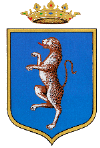 Lucca Links
Lucca Links 
Barga, paese come tanti......,
Catalogo della Mostra tenuta alla Camera di Commercio di Lucca, dal 10 al
30 Settembre 1994 con la collaborazione della Sezione di Barga dell'Instituto
Storico Lucchese.
| De Italiaanse heiligenbeeldenmaker Giovanni Domenico Sargentini
vestigde zich in de tweede helft van de negentiende eeuw in de Amsterdamse
Jordaan. Zijn afstammelingen zijn rasechte Amsterdammers, die hun sporen
hebben nagelaten in de Amsterdamse architectuur en beeldhouwkunst.
Figuristi Sargentini is het relaas van de speurtocht
naar de afkomst van de Sargentini's. Figuristi Sargentini is meer dan alleen een familiekroniek. Het is ook een kleine geschiedenis van de Amsterdamse Jordaan en het ambachtsleven in de 19de eeuw, en geeft bovendien inzicht in de omzwervingen van de Toscaanse gipsgieters [Ook de familiegeschiedenis van de Fazzi's komt in meerdere hoofdstukken aan de orde. ed] |
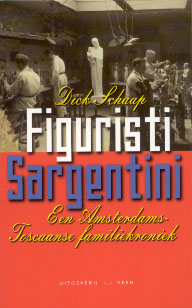 |
 You can write me by
e-mail at: G.Fazzi@Farmaco.UNIMAAS.nl
You can write me by
e-mail at: G.Fazzi@Farmaco.UNIMAAS.nl
![]()
Copyright © 1999 G.E.Fazzi. All rights reserved. This material
may not be
published, broadcast, rewritten, or redistributed without prior written permission
from the author.